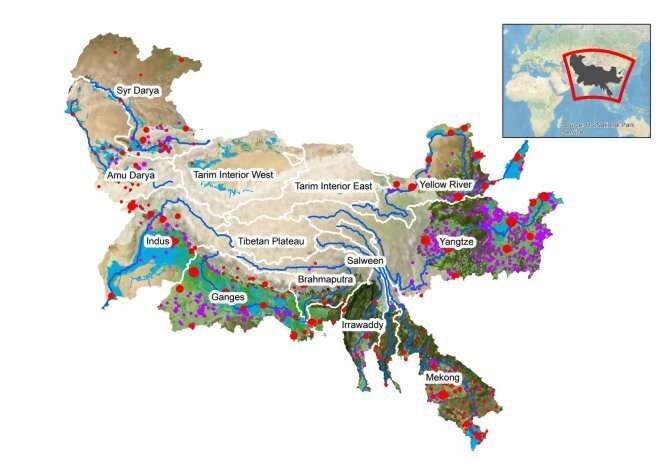This article has been reviewed according to Science X's editorial process and policies. Editors have highlighted the following attributes while ensuring the content's credibility:
fact-checked
trusted source
proofread
Disappearing Himalayan snow and ice will impact food production in one of the world's major rice bowls, says report

A major new assessment report from an eight-nation body, the International Center for Integrated Mountain Development (ICIMOD), to which WUR contributed, reveals the changes to the glaciers, snow and permafrost of the Hindu Kush Himalayan region driven by global warming are "unprecedented and largely irreversible."
The study, "Water, Ice, Society, and Ecosystems in the Hindu Kush Himalaya (HI-WISE)," draws on recent scientific advances to map the links between the cryosphere, water, biodiversity and society in the region for the first time, charting the impacts of rapid changes in glaciers and snow on people and nature.
Millions of livelihoods rely on meltwater
The report finds that glaciers in the region could lose up to 80% of their current volume by the end of the century, on current emissions trajectories. Snow cover is projected to fall by up to a quarter under high emissions scenarios—drastically reducing freshwater for major rivers such as the Amu Darya, where it contributes up to 74% of river flow, the Indus (40%) and Helmand (77%). The extent of frozen ground (permafrost) is decreasing, which will lead to more landslides and problems for infrastructure at high elevation.
The Hindu Kush Himalaya holds immense significance for millions of people who rely on the meltwater from its glaciers and snowpacks. The rapid melting of its glaciers is affecting farmers in downstream regions who use river water to irrigate their crops, says Hester Biemans, researcher Water and Food at Wageningen University & Research and contributor to the study. She investigates these interactions between melting glaciers and downstream food production, emphasizing the importance of quantifying the impact on the people who actually depend on meltwater.
Third pole
Often hailed as the "third pole," the Hindu Kush Himalaya possess a vast reservoir of frozen water, which is an important source of water for 12 rivers that flow through 16 countries in Asia. Approximately 2 billion people depend, to varying extents, on this water for their fundamental needs, such as drinking water, energy generation, and irrigation for food production. Notably, about a third of the world's rice and a quarter of its wheat is cultivated in these river basins. This situation raises concerns about the potential consequences of melting ice on rice and wheat production and the overall food security of the area.
Biemans says, "It is crucial that we comprehensively assess and understand what glacier melting will mean for water availability downstream, both for floods and droughts. This will enable us to proactively take measures and implement adjustments to mitigate these effects. To sustain food production, farmers will need to adapt their agricultural practices to changes in meltwater supply."
More information: Water, Ice, Society, and Ecosystems in the Hindu Kush Himalaya (HI-WISE). hkh.icimod.org/hi-wise/
Provided by Wageningen University




















